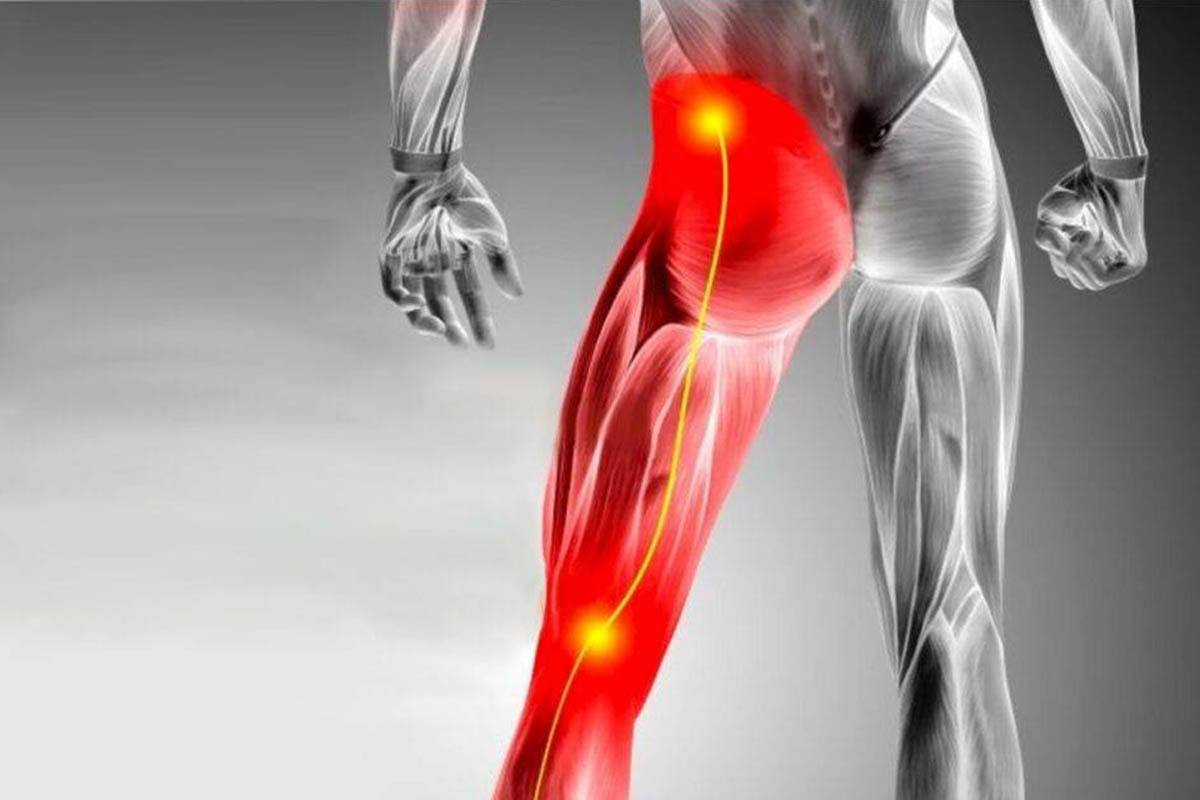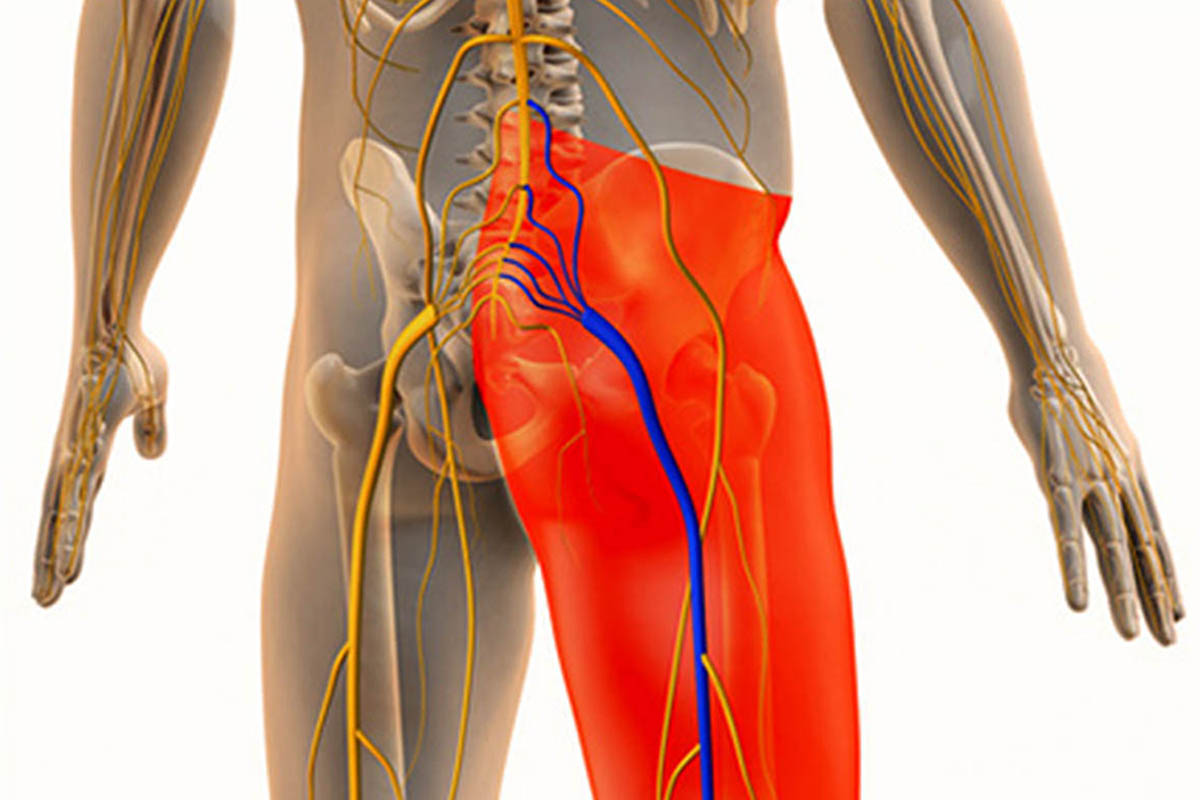Sciatica is one of the most common yet misunderstood types of pain. This condition affects as many as 40% of people during their lifetime and becomes more frequent as they age. Sciatica is characterized by severe pain radiating along the sciatic nerve, which extends from the lower back through the hips and buttocks and down each leg. The pain can vary from a mild ache to a sharp, burning sensation or excruciating discomfort, often accompanied by tingling, numbness, or muscle weakness in the affected leg.
Recognizing the signs of healing is crucial in managing sciatica and finding quick relief for sciatica pain. Understanding these signs can help you assess whether your treatment is working and guide you in making informed decisions about your recovery journey.
What Causes Sciatica Pain?
Sciatica occurs when the sciatic nerve is compressed, usually by a herniated disk, bone spurs on the spine, or spine narrowing (spinal stenosis). In rare cases, the nerve can be compressed by a tumor or damaged by a disease like diabetes. Prolonged sitting, sudden movements, or heavy lifting often exacerbate sciatica discomfort.
How Long Does Sciatica Pain Last?
The duration of sciatic pain varies from person to person. Acute sciatica typically lasts one to two weeks and generally resolves within a few months. However, chronic pain can persist for a more extended period, potentially becoming a lifelong issue if not properly managed. The good news is that many people experience a gradual improvement within a few weeks with appropriate conservative treatments.
Signs of Sciatica Improving
Signs of improving sciatica may include a noticeable decrease in pain intensity, centralizing of the pain (pain moving in location, towards the back and away from the leg) increased mobility, and decreased symptoms such as tingling and loss of sensation. You may also notice an enhanced ability to perform everyday activities without discomfort as your condition improves.
Decrease in Pain Intensity and Frequency
One of the most encouraging signs that your sciatica is improving is a positive indicator of a reduction in the intensity and frequency of the pain. Initially, the pain might be persistent and constant, but as you recover, it should become less intense and occur less often. Specific activities that used to trigger your pain, like standing up from a seated position, are now less painful.
Improvement in Mobility
As sciatica pain improves, you’ll likely notice increased mobility. Simple tasks like bending, walking, or climbing stairs will become more accessible and less painful, contributing to a better quality of life. Improved mobility indicates that the inflammation around your sciatic nerve decreases, allowing you to move more freely and with less muscle tightness.
Muscle Feels Stronger

Sciatica often leads to muscle weakness, particularly in the leg, which nerve pain affects. As your condition improves, muscle strength should start to return. You may notice that you can perform exercises and daily activities more easily, indicating that your abdominal muscles are regaining strength.
Changes in Pain Location
During recovery, you might notice that the pain shifts from your leg and buttock area to your lower back. This phenomenon, known as “centralization,” is a positive sign that the nerve is healing. Centralization indicates that the nerve compression is reducing, and the pain retreats towards its source in the lumbar spine.
Overall, 84.8% of patients reported experiencing centralization. In patients with sciatica, centralization was common and associated with improved activity limitation and leg pain. This shift in pain location is an encouraging sign of progress that your body is on the path to recovery.
Symptoms Change
As your sciatica improves, the nature of your symptoms may change. For example, you might experience less numbness or tingling, and your overall discomfort may feel less sharp and more like a dull ache. These changes suggest that the nerve damage is recovering and your body is healing, signaling ongoing improvement.
Experiencing Fewer Muscle Spasms
Painful muscle spasms are a common symptom of sciatica and can be extremely painful. As your sciatica improves, you should experience fewer and less intense muscle spasms. This reduction is another sign that the inflammation and irritation of the nerve are subsiding.
Can Sciatica Get Worse Before It Starts to Improve?
Yes, sciatica can sometimes feel worse before it starts to get better. How do you know when sciatica will get better? This is often due to the body’s response to treatment, as inflamed tissues begin to heal and repair. It’s essential to stick with your treatment options and not get discouraged if you experience a temporary increase in sharp pain.
Will My Sciatica Get Better on Its Own?
Sciatica can occasionally improve independently with time, rest, and self-care measures. However, if your pain is severe or persists for more than a few weeks, it’s essential to seek professional help. Even if the pain improves, the underlying issue that caused sciatica in the first place, is still present, and will reoccur. Healthcare professionals may recommend pain management strategies such as muscle relaxants and epidural steroid injections to help accelerate recovery and prevent long-term complications.
The Phases of Sciatica Recovery
The recovery from sciatica generally unfolds in several distinct phases, starting with initial treatment and moving toward rehabilitation and strengthening. Understanding these phases can help you track your progress and set realistic expectations for your recovery journey.
Phase 1: Acute Phase
During the initial stage, the primary focus is reducing pain and inflammation. This is typically managed through rest, ice therapy or heat therapy, counter pain relievers, and gentle stretches. Avoiding activities that might aggravate the pain during this phase is essential.
Phase 2: Recovery Phase
The recovery phase focuses on regaining mobility and strength as the pain subsides. Physical therapy exercises play a crucial role during this phase, helping to stretch and strengthen the muscles supporting the spine. You’ll likely engage in exercises that improve your spinal alignment and core stability, which is essential for preventing future injury.
Phase 3: Maintenance Phase
The final phase of recovery involves maintaining your progress and preventing a recurrence of sciatica. This phase includes regular exercise, proper posture at work and home, and ongoing physical therapy if necessary. The goal is to keep your spinal cord healthy and robust, reducing the likelihood of sciatica returning.
Tips for a Successful Recovery
- Stay Active: While rest is essential, prolonged inactivity can worsen sciatica. Engage in gentle exercises like walking or swimming to keep your muscles active and improve your range of motion.
- Practice Good Posture: Poor posture can aggravate sciatica. Be mindful of your posture when sitting, standing, and lifting heavy objects.
- Stay Mobile: Regular stretching and mobility of the hips and low back can help alleviate tension and prevent future episodes of sciatica by reducing tight muscles.
- Use Proper Lifting Techniques: Avoid heavy lifting, and when you do need to lift something, be sure to bend at the knees and keep the object close to your body, and keep your back straight.
How to Prevent Sciatica from Returning
To prevent a recurrence of sciatica, it’s crucial to maintain a healthy weight, good fitness level, and good flexibilty. Excess weight can place added stress on your spine, leading to increased risk. Weight management is key. Strengthening your core muscles is equally important, as a robust core provides vital support for your spine and helps minimize the likelihood of developing sciatica. Additionally, if your job demands long periods of sitting, it’s essential to take regular breaks to stand, stretch, and move around to promote better spinal health and blood flow.
When to Seek Medical Help

If your sciatica symptoms are severe, persistent, or worsening despite self-care measures, seeking medical help is essential. Warning signs that require immediate attention include loss of bowel or bladder control, severe leg weakness, or pain following a traumatic injury. Early intervention with medical interventions can prevent further damage and improve your chances of a full recovery.
Get Expert Sciatica Care with Austin Manual Therapy
At Austin Manual Therapy Associates, we specialize in personalized, hands-on physical therapy treatments designed to relieve sciatica pain quickly. Our experienced therapists will work with you to create a customized treatment plan that addresses your specific needs and goals, helping you recover faster and prevent future recurrences. With a focus on patient education and empowerment, we’re committed to helping you achieve long-term health and wellness through a comprehensive treatment plan.
Conclusion
Recognizing the signs of improvement in sciatica and understanding the recovery phases is key to effectively managing this painful condition. With proper care and treatment, most people can recover from sciatica and return to normal activities. If you’re struggling with sciatica pain, don’t hesitate to contact Austin Manual Therapy Associates for expert guidance and support in your healing journey.
FAQ’s
How Does It Feel When Sciatica Is Healing?
When sciatica is healing, the pain intensity decreases, mobility improves, and muscle strength returns. You may also notice that the pain centralizes, moving from your leg to your lower back, as part of the healing process.
How Do I Get My Sciatic Nerve to Stop Hurting?
To alleviate sciatic nerve pain, consider engaging in regular stretching exercises like hamstring stretches, practicing good posture, applying cold compresses or heat therapy, and staying active. If the pain persists, consult a healthcare provider for a tailored treatment plan.
How to Tell if Sciatica is Getting Worse?
Signs that sciatica is worsening include an increase in pain intensity, spreading of pain to other areas, worsening muscle weakness, and new symptoms like bowel or bladder dysfunction. If you experience these symptoms, seek professional advice immediately.





